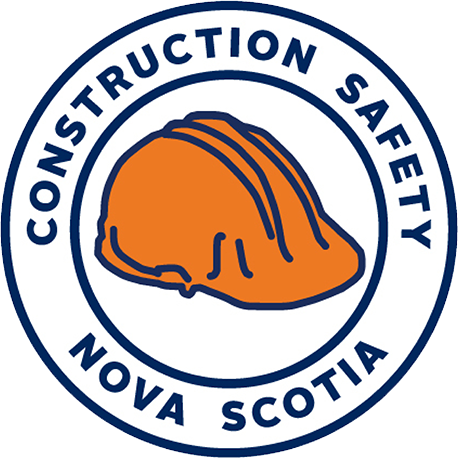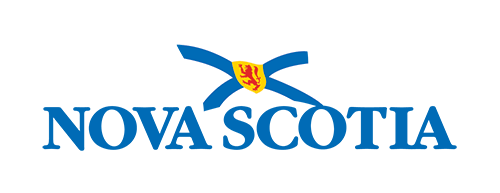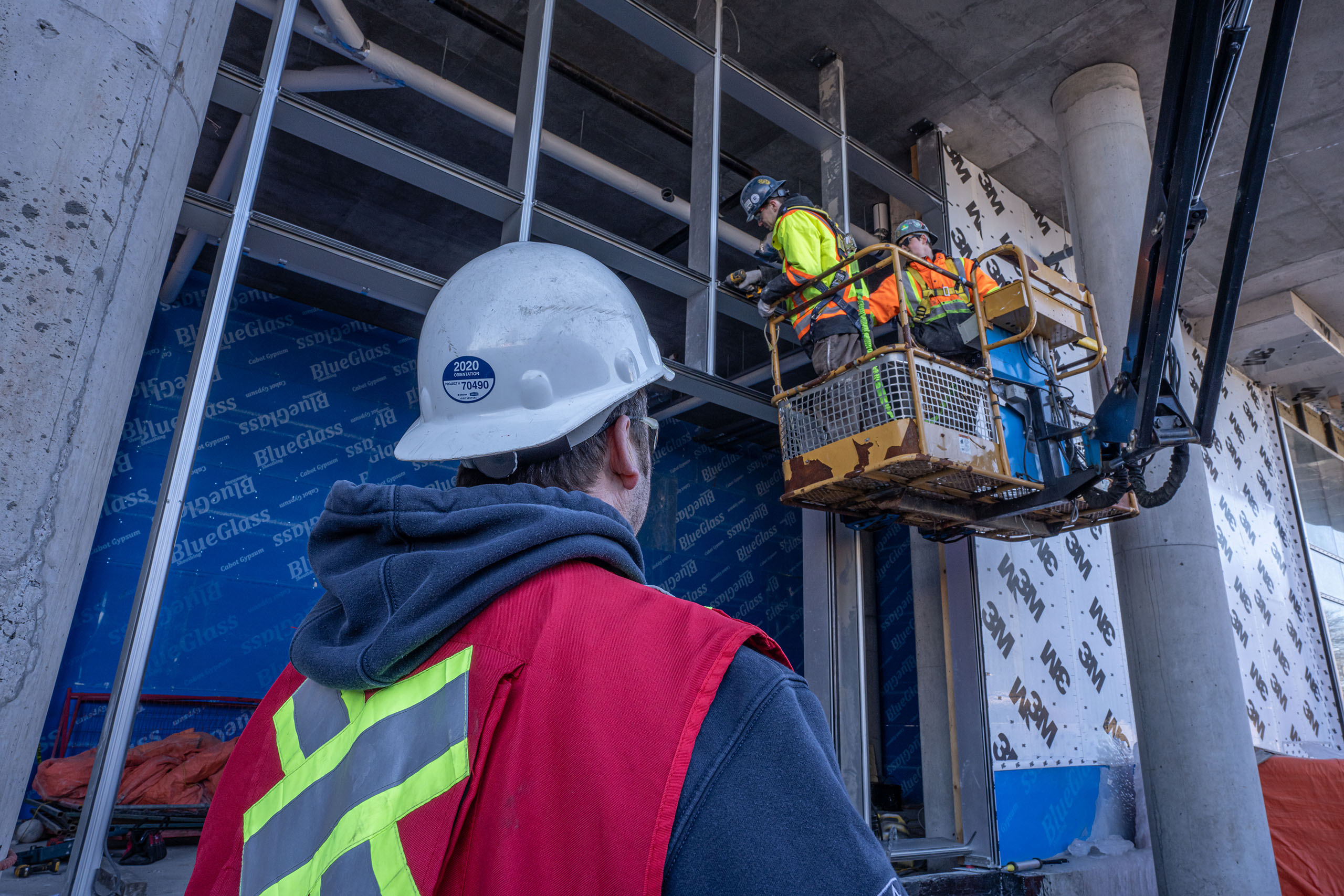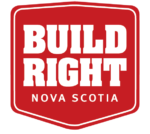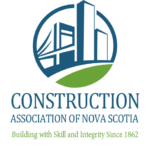Employer Responsibility
An employer must:
General Requirements
- If fall protection is required as appropriate in the , make sure that at least 1 of the following means is used: a guardrail, temporary flooring, a personnel safety net, a travel restraint system, or a fall-arrest system.
- If using fall protection is not reasonably practicable, make sure that an alternate control measure is used to reduce the risk of a fall.
Safe-Work Procedures & Specific Safe-Work Plans
- Establish a fall-protection , based on a hazard assessment of the type of work being performed, for any work area where fall protection is required, and the maximum fall distance is less than 7.5m.
- Establish a specific fall-protection , based on a hazard assessment of the specific type of work being performed, for any specific where fall protection is required, and the maximum fall distance is 7.5m or more.
- Exception: An employer who is an emergency services agency is not required to establish a specific written fall-protection safe-work plan or rope access safe-work plan for a specific work area when responding to an emergency if they meet all of the .
Training
- Make sure that a person takes and successfully completes fall protection before they do any of the , and once at least every 3 years.
- Make sure fall protection training includes all of the required .
- Must maintain the fall protection training records that include the required .
- Make sure a training record in the form of a certificate or card is provided to the successful participants; that is signed by the instructor and has the required information indicated on it.
Reporting Falls
- Notify the within 24 hours any fall from a work area, in circumstances where fall protection is required by the regulations, whether any person is injured or not.
General Equipment Requirements
- Make sure any equipment, and components of equipment or systems are erected, installed, assembled, used, handled, stored, adjusted, maintained, repaired, inspected, serviced, tested, cleaned and dismantled according to the manufacturer’s specifications, and comply to all applicable standards.
- Obtain a from an engineer, ensuring that your intended use of the equipment and/or components of equipment or systems provide an adequate level of safety for all persons at or near the workplace, in all of the .
- Make sure any equipment used is inspected by the worker before each use, and annually by a competent person, or more frequently as specified in any applicable Part of these regulations.
- Make sure that equipment inspections follow any manufacturer’s instructions that provide instructions on how to conduct the inspections and are performed as specified in any applicable part of these regulations.
- Make sure that used equipment is re-certified per the manufacturer’s specifications, or an engineer’s certification (if obtained).
- Make sure that equipment that may be exposed to heat, abrasion or corrosion is either made of a material that can withstand the exposure without being damaged, or is protected from the exposure.
- Make sure that equipment is taken out-of-service if any of the following apply: it is defective, has come into contact with excessive heat, has been exposed to a chemical or other substance that could corrode or otherwise damage it or a component of the equipment, or has been used to stop a fall.
- Make sure that out-of-service equipment is not returned to service until it is inspected, repaired as necessary and re-certified by the manufacturer, by an engineer.
- Make sure that out-of-service equipment is managed .
- Destroy immediately the out-of-service equipment that is not awaiting inspection, repair or re-certification.
- Make sure that whether or not guardrails are also installed, that fall-arrest equipment is worn and anchored to a suitable anchorage before operating the .
Fall Protection Systems
- Make sure that guardrails used as a means of fall protection are:
- installed around any uncovered opening on any surface, and at the perimeter or other open side of a work area.
- designed and installed in compliance with the latest version of CSA standard CSA 797, “Code of Practice for Access Scaffolds”.
- if there is a risk of falling at a doorway or the opening of a building floor, roof, walls or shaft; the guardrail is installed per this Section, and marked with a warning sign that indicates the presence of a doorway or other opening.
- Make sure that temporary flooring used as a means of fall protection is able to withstand 4 times the maximum load likely to be on it and is installed extending over the entire work area (with the exception of any openings necessary for the carrying out of work) and is securely fastened to prevent lateral and upward movement.
- Make sure that a personnel safety net used as a means of fall protection is designed, manufactured, installed, used, inspected, tested and made of materials per the latest version of ANSI standard A10.11, “American National Standard for Construction and Demolition Operations – Personnel and Debris Nets”.
- Make sure that personnel safety nets must be erected and installed per the , despite any other requirements set out in the ANSI standard A10.11.
- Make sure that a personal travel restraint system used as a means of fall protection to restrict movement meets the requirements of the latest version of CSA standard CSA Z259.16, “Design of active fall-protection systems”.
- Make sure that a fall-arrest system that is used as a means of fall-protection is:
- erected, installed, assembled, used, handled, stored, adjusted, maintained, repaired, inspected, serviced, tested, cleaned and dismantled in accordance with the manufacturer’s specifications; and,
- designed in accordance with the requirements of the latest version of CSA standard CSA Z259.16, “Design of active fall-protection systems”.
- Make sure a work-positioning system is not used as a means of fall arrest. . They must be used in combination with a fall-arrest system, when:
- the centre of gravity of the person using the work-positioning system extends beyond the edge from which a person could fall; and,
- the state or condition of the work surface creates a slipping or tripping hazard.
Fall Protection Equipment
- Make sure that a person using a personal fall-arrest system wears a full-body harness; and, it is used and certified in compliance with the latest version of CSA standard CSA Z259.10, “Full Body Harnesses”.
- Make sure that body belts are not used as a component of a fall-arrest system; and, their design, markings and instructions comply with the latest version of CSA standard CSA Z259.1, “Body Belts and Saddles for Work Positioning and Travel Restraint”.
- Make sure that energy absorbers and lanyards used in a fall-arrest system are used and certified in compliance with the latest version of CSA standard CSA Z259.11, “Energy Absorbers and Lanyards”. The lanyard must be equipped with an energy absorber unless all of the conditions are met.
- Make sure that all anchorages used as components of a fall-protection system are capable of withstanding the following forces in any direction in which the force may be applied:
- 22 kN, for non-engineered anchorage;
- 2 times the maximum arresting force anticipated, for an engineered anchorage.
- Make sure that a horizontal lifeline used as a component of a fall-protection system is designed and installed in compliance with the latest version of CSA standard CSA Z259.16, “Design of Active Fall-Protection Systems” and, is used, certified and made of material in compliance with the latest version of CSA standard CSA Z259.13, “Flexible Horizontal Lifeline Systems”.
- Make sure that a vertical lifeline used as a component of a fall-protection system is used and certified per the latest version of CSA standard CSA Z259.2.1, “Fall Arresters, Vertical Lifelines and Rails”.
- Make sure that self-retracting devices used as a component of a personal fall-arrest system have design, markings and instructions that comply with the latest version of CSA standard CSA Z259.2.2, “Self-Retracting Devices for Personal Fall-Arrest Systems”.
- Make sure a self-retracting device used as a component of a personal fall protection system is anchored over the user’s head (unless the manufacturer’s specifications allow using a different anchorage location); and is used in a manner that minimizes the hazards of swinging, and if the user falls, limits the distance they drop during the swing to 2 m.
- Make sure all connecting components for a fall-arrest system are used and certified in compliance with the latest version of CSA standard CSA Z259.12, “Connecting Components for Personal Fall-Arrest Systems (PFAS)”.
- Make sure any carabiners and snap hooks used as components of a fall-arrest system are self-closing and self-locking; and only capable of being opened by a minimum of 2 consecutive and deliberate manual actions.
- Make sure that each component of a fall-protection system is compatible as indicated in the manufacturer’s specifications and instructions for the use of their equipment:
- compatible with each other component;
- the safe function of any component does not interfere with the safe function of another component; and,
- compatible with the work conditions and conditions of the physical environment under which the equipment is to be used.
Exceptions and Circumstances
Fall protection is not required for a person who is entering or exiting a work area by a safe means of access and egress.
[N.S. Reg. 52/2013, s. 21.2(3)]
In any of the following circumstances, fall protection is required only where reasonably practicable, and to the extent practicable:
(a) if work must be performed on or from a vehicle, rail car or other mobile equipment;
(b) if it is not reasonably practicable to perform work other than from a ladder and it is not reasonably practicable for the person performing the work to maintain adequate contact with the ladder while performing the work;
(c) if the density of tree branches prevents an arborist from crotching.
Written Procedure Exceptions
A written fall-protection safe-work procedure is not required under subsection (1) if any of the following conditions apply:
(a) all persons performing the work are protected by a permanent guardrail;
(b) the work is performed from a work-platform described in Sections 23.12 to 23.15 of Part 23: Scaffolds and Other Elevated Work-platforms and all persons performing the work are using adequate fall protection.
[N.S. Reg. 52/2013, s. 21.3(2)]
Fall Protection Safe Work Procedure Contents
The fall-protection safe-work procedure for work less than 7.5m must include all of the following information: :
- (a) the nature of the work to be performed;
- (b) the typical duration of the work;
- (c) a description of the work;
- (d) a list of the primary tools or equipment used in the work;
- (e) reference to applicable health and safety legislation and regulations;
- (f) a list of potential fall hazards of the work and their associated risks;
- (g) the risk controls to be used to prevent injury to persons coming in contact with known hazards;
- (h) the effect of weather conditions;
- (i) the name of the person or position that has supervisory responsibility for the work, whether the person is present at the work area or not;
- (j) the training and qualifications required for persons who will perform the work, as determined by the employer;
- (k) a method for communicating the fall-protection safe-work procedure to any person who may be affected by the procedure.
Written Safe-Work Plan Exceptions
A specific written fall-protection safe-work plan is not required under subsection (1) if any of the following conditions apply:
(a) all persons performing the work are protected by a permanent guardrail;
(b) the work is performed from a work-platform described in Sections 23.12 to 23.15 of Part 23: Scaffolds and Other Elevated Work-platforms and all persons performing the work are using adequate fall protection;
(c) the work is performed by an emergency services agency in accordance with Section 1.16.
[N.S. Reg. 52/2013, s. 21.4(2)]
Fall Protection Safe Work Plan Contents
The fall-protection safe-work plan for work at and above 7.5m must include all of the following information:
- (a) the nature of the work to be performed;
- (b) the anticipated duration of the work;
- (c) a description of the work;
- (d) a list of the primary tools or equipment to be used in the work;
- (e) reference to applicable health and safety legislation and regulations;
- (f) a list of potential fall hazards of the work and their associated risks;
- (g) the fall-protection system or systems to be used at the work area;
- (h) any anchorages to be used during the work;
- (i) if a fall-arrest system is to be used, confirmation that the clearance distances below the work area are sufficient to prevent a person from striking
- (i) the nearest safe surface or water,
- (ii) a surface or thing that could cause injury to the person on contact, or
- (iii) exposed hazardous material, such as an open tank, pit or vat;
- (j) a procedure to address the risks associated with the potential for swing as a result of anchorage placement when a person is using a fall-arrest system;
- (k) the procedures to be used to assemble, maintain, inspect, use and disassemble a fall-protection system, as applicable;
- (l) schedules for inspecting any fall-protection systems and the names of any persons responsible for carrying out the inspections;
- (m) adequate written rescue procedures to be used if a person falls and requires rescue, including if a person is suspended by a fall-arrest system or personnel safety net;
- (n) the effect of weather conditions;
- (o) the name of a designated competent person to supervise the work area;
- (p) the training and qualifications required for persons who will perform the work, as determined by the employer;
- (q) a method for communicating the fall-protection safe-work plan to any person who may be affected by the plan.
Separate or Overall Plan
If a workplace has more than 1 work area for which a fall-protection safe-work plan is required, an employer may create a separate plan for each specific work area or one overall plan for the workplace that includes all of the requirements necessary for each specific plan.
[N.S. Reg. 52/2013, s. 21.4(4)]
Emergency Service Exception Requirements
(a) have established the following applicable procedures for the work:
(i) a fall protection safe-work procedure under Section 21.3,
(ii) a code of practice for rope access work under Section 22.5; and
(b) they train to and comply with the procedures in clause (a) and standard protocols for emergency services work applicable to a work area where a person is at a risk of falling.
[N.S. Reg. 52/2013, s. 1.16]
Training must be instructed by a competent person.
The person conducting the training must identify a method of evaluating the person taking the training and determining whether a person successfully completes the training.
Listed Actions
(a) before they do any of the following:
(i) use fall protection,
(ii) work in, supervise or plan the work for a work area where fall protection is required.
[N.S. Reg. 52/2013, s. 21.19(1)]
Training Topics
Training on fall protection must include all of the following, as applicable to the nature of the work:
(a) a review of all applicable health and safety legislation, regulations and standards;
(b) identification of fall hazards;
(c) a review of the hierarchy of controls that may be used to eliminate or minimize risk of injury from a fall;
(d) the different methods of fall protection and the most suitable application of the methods;
(e) fall-protection and safe-work procedures;
(f) instruction on assessing and selecting specific anchors that may be used for various applications;
(g) instruction on selecting and correctly using fall-protection components, including connecting hardware;
(h) information about the effect of a fall on the human body, including all of the following:
(i) free fall,
(ii) swing fall,
(iii) maximum arresting force, and
(iv) the purpose of energy
absorbers,
(i) pre-use inspections of equipment and systems;
(j) emergency response procedures to be used if a fall occurs;
(k) practice in all of the following:
(i) inspecting, fitting, adjusting and connecting fall-protection systems and components,
(ii) the emergency response procedures required by clause (j).
[N.S. Reg. 52/2013, s. 21.20]
Record of Training
A record of training under this Section must include all the following information:
(a) the name of the participant;
(b) the date or dates of training;
(c) the name of the instructor;
(d) the name of the employer;
(e) the name of the training organization, if training is not conducted by the employer;
(f) a description of the training;
(g) the expiry date before which training must be renewed.
[N.S. Reg. 52/2013, s. 21.21(b)]
“Director” means the Health and Safety or any person designated by the Executive Director pursuant to this Act to act on behalf of the Executive Director. Contact number: 1-800-952-2687
Certification
1.11 (2) An engineer must do all of the following before certifying equipment, components of equipment or components of a system under subsection (1):
(a) ensure that the use of the equipment, components of equipment or components of a system as intended by the employer is in accordance with generally accepted engineering practices;
(b) identify, as part of the written certification, any measures to be taken to provide an adequate level of safety.
[N.S. Reg. 52/2013, s. 1.11(2)]
1.11(3) An engineer must sign any written certification they prepare under this Section.
[N.S. Reg. 52/2013, s. 1.11(3)]
Specified Circumstances
(a) the employer intends to use the equipment, components of equipment or components of a system for a purpose or in a manner that is
(i) not specifically permitted by the manufacturer’s specifications,
(ii) not specifically permitted by an applicable standard referred to in these regulations;
(b) the employer intends to use equipment, components of equipment or components of a system for which no manufacturer’s specifications exist or are provided.
[N.S. Reg. 52/2013, s. 1.11(1)]
Disposition of Out-Of-Service Equipment
If the equipment is awaiting inspection, repair or re-certification, it must be
(i) immediately removed from the work area,
(ii) clearly identified as taken out of service, and
(iii) stored separately from equipment that has not been taken out of service;
[N.S. Reg. 52/2013, s. 1.14(4)(a)]
Specified work-platforms:
- Portable, self-propelled, and self-propelled boom-supported elevating work-platforms, or
- Elevating work-platforms used for fire-fighting.
[N.S. Reg. 52/2013, s. 23.13(4)]
Safety Nets Requirements
(a) it must be erected and installed under the supervision of a competent person;
(b) it must be positioned as close as reasonably practicable, but no more than 9 m below the work area and extend at least 2.4 m on all sides beyond the work area;
(c) it must be positioned and maintained so that when arresting the fall of a person, the maximum deflection of the personnel safety net does not permit any portion of the person to contact another surface;
(d) it must be free of debris, obstructions or intervening objects that may be struck by a person who falls from a workplace into the net.
[N.S. Reg. 52/2013, s. 21.7(2)]
Safety Nets Requirements
(a) it must be erected and installed under the supervision of a competent person;
(b) it must be positioned as close as reasonably practicable, but no more than 9 m below the work area and extend at least 2.4 m on all sides beyond the work area;
(c) it must be positioned and maintained so that when arresting the fall of a person, the maximum deflection of the personnel safety net does not permit any portion of the person to contact another surface;
(d) it must be free of debris, obstructions or intervening objects that may be struck by a person who falls from a workplace into the net.
[N.S. Reg. 52/2013, s. 21.7(2)]
